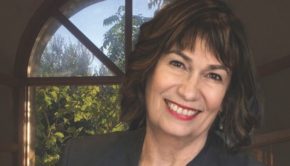Kidfluencers: Using Social Media for Positive Change
Social media has made it easier than ever to share ideas, and today’s generation of digital natives are adept at using it. With one video post, they can reach thousands in minutes. Welcome to the world of “kidfluencers”: young people with throngs of online followers that use their platforms to sway their peers (and adults, too). Aged 16 or younger, these engaged leaders know the ins-and-outs of the latest technology and understand that there is power in becoming more than just a passive viewer. While some use social media outlets to earn sponsorships or market products, others leverage their online brands to inspire agents of change and make a positive difference in the world.
Reaching the Reading Masses
When eighth-graders Kyra and Phallon Pierce noticed a racially insensitive book and zero multi-cultural authors on an assigned reading list, the Chicagoland-based identical twins decided to take action. They launched Positive Change Charities, a nonprofit that awards book grants to promote diverse authors to kids in need and underfunded K-12 libraries across Illinois.
“We’ve given out about 4,000 books, and I’m really excited about that because we go to the schools and personally get to give those books out,” Kyra says. The twins are competitive dancers and use social media to promote their performances, and they employ those same venues to get the word out about their book-focused work.
On Instagram, for example, the Pierce girls encourage Illinois kids to check out their curated reading list, apply for a grant or push for state legislation that compels the inclusion of diverse authors in K-12 curriculums. “I feel like [social media] is a really good tool to use, because it allows you to get to a wide variety of people,” Phallon notes. “It hits adults; it hits teenagers; it hits anybody. It allows you to really push your message out there.”
Mobilizing Community Cleanups
Known as The Conservation Kid, Cash Daniels is a 14-year-old influencer from Chattanooga who uses Instagram to promote Tennessee River preservation efforts. Since he began this work at age 7, he has helped recycle 2,000 miles of fishing line and remove more than 30,000 pounds of trash and two tons of aluminum cans from area waterways. He leads community cleanups and often speaks directly to children at school functions.
“Kids may be a small part of the population, but we’re 100 percent of the future,” Daniels asserts. “And if somebody says you can’t do it, get out there and prove them wrong.” Instagram is his preferred outlet because that’s where he feels he can reach the most people in the limited time he can commit to online endeavors. In addition to leveraging social media to inspire others, he has met some of his best friends online, as well as people wanting to collaborate with him to amplify his message.
Protecting Young Influencers
While influencers like the Pierce twins and Daniels work hard to promote positive messages online, they are not immune to the more negative realities of being in the spotlight. If their interests or values don’t align with abusive keyboard warriors, these well-meaning kids may be subjected to trolling, online bullying and hate speech.
Dr. Meg Arroll, a psychologist and author of Tiny Traumas: When You Don’t Know What’s Wrong, but Nothing Feels Quite Right, believes that online influencing is a form of work and families should try to strike the right work-life balance. “How many hours a day would we allow our kids to work, even if it’s something that they wanted to do?” she asks.
Arroll highlights the complexities that parents must navigate when a child starts to earn money or products in exchange for social media influence. Those likes, shares and other types of engagement, she says, trigger the reward center in human brains, and that can lead to addictive-like behavior.
Recognizing the dangers, the parents of both the Pierce twins and Daniels limit their kids’ social media use and monitor posts so that they can address any worrisome events or behaviors before they get out of control.
Inspiring New Kidfluencers
When the Pierce twins visit schools, their audiences are comprised of kids just like them. “There’s no difference between us; we’re all the same,” says Phallon, and Kyra chimes in that this commonality can be inspiring. Daniels believes that when kids see him in action on social media, they are motivated to act, as well. He is a role model—opening new possibilities for future kidfluencers.
Megy Karydes is a Chicago-based writer and author of 50 Ways to More Calm, Less Stress: Scientifically Proven Ways to Relieve Anxiety and Boost Your Mental Health Using Your Five Senses.





























